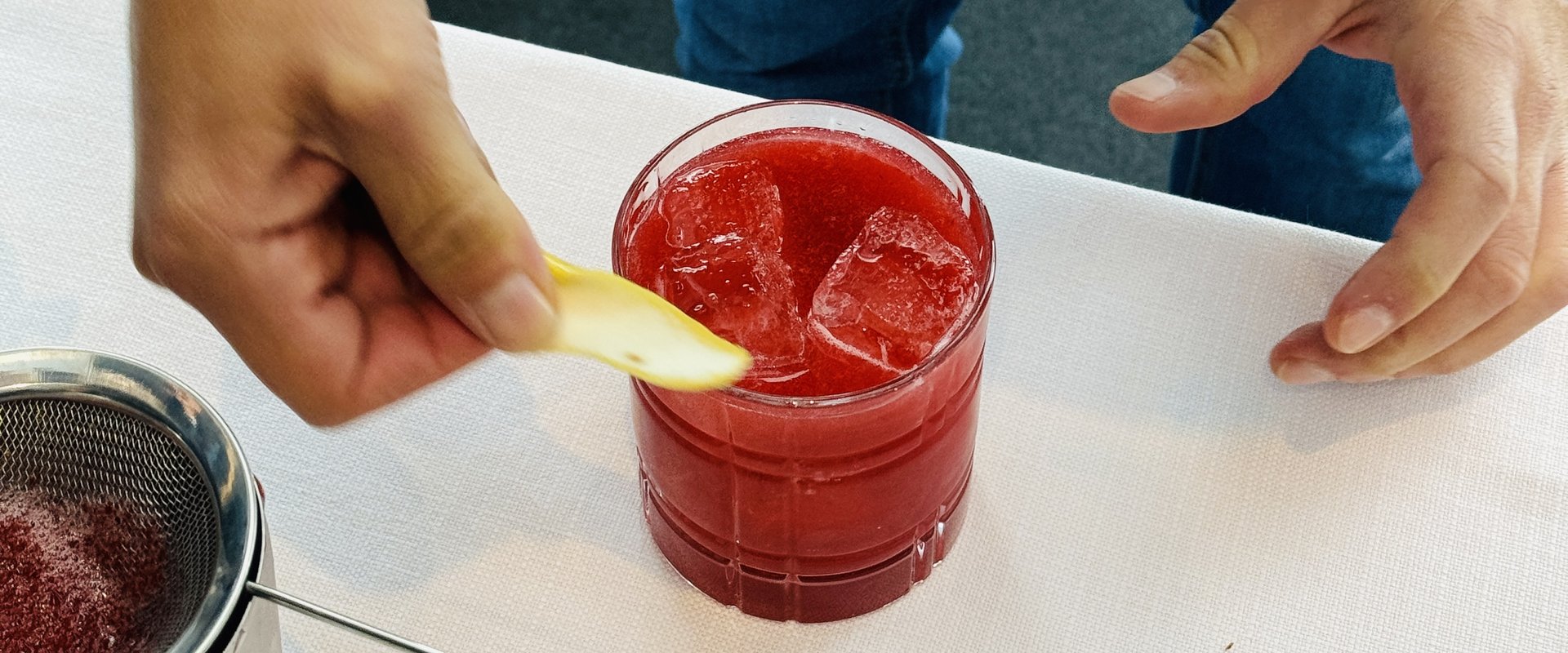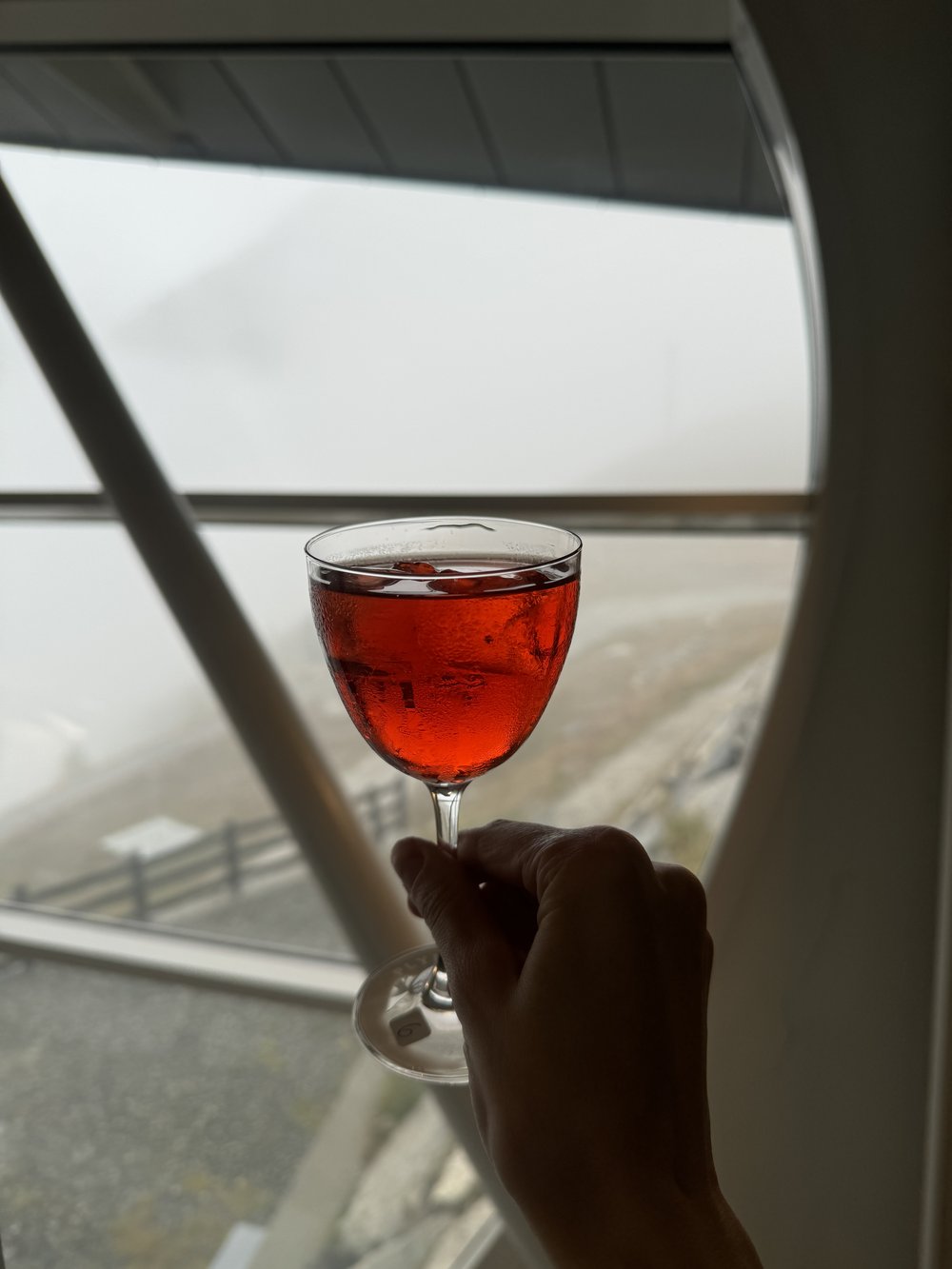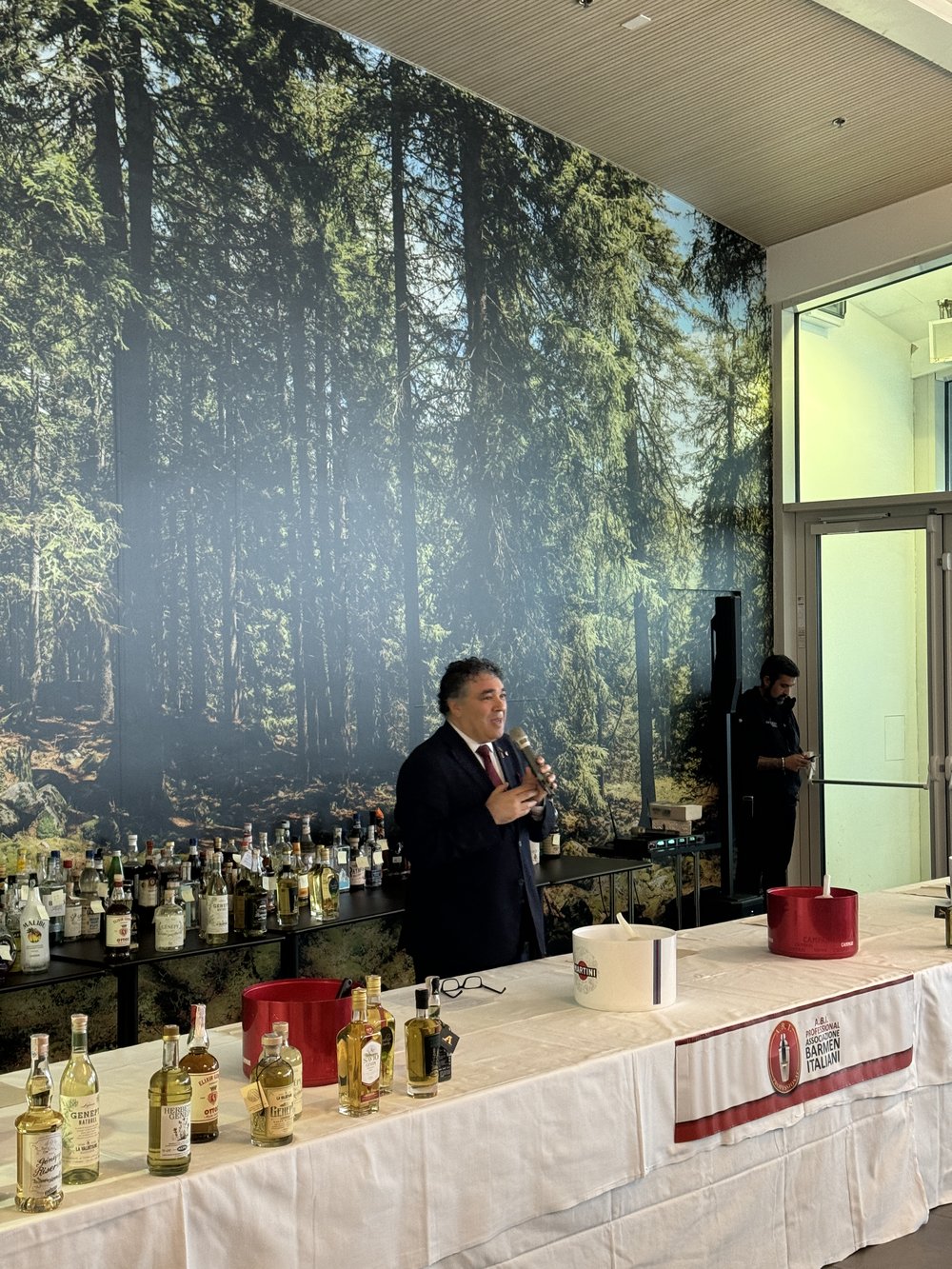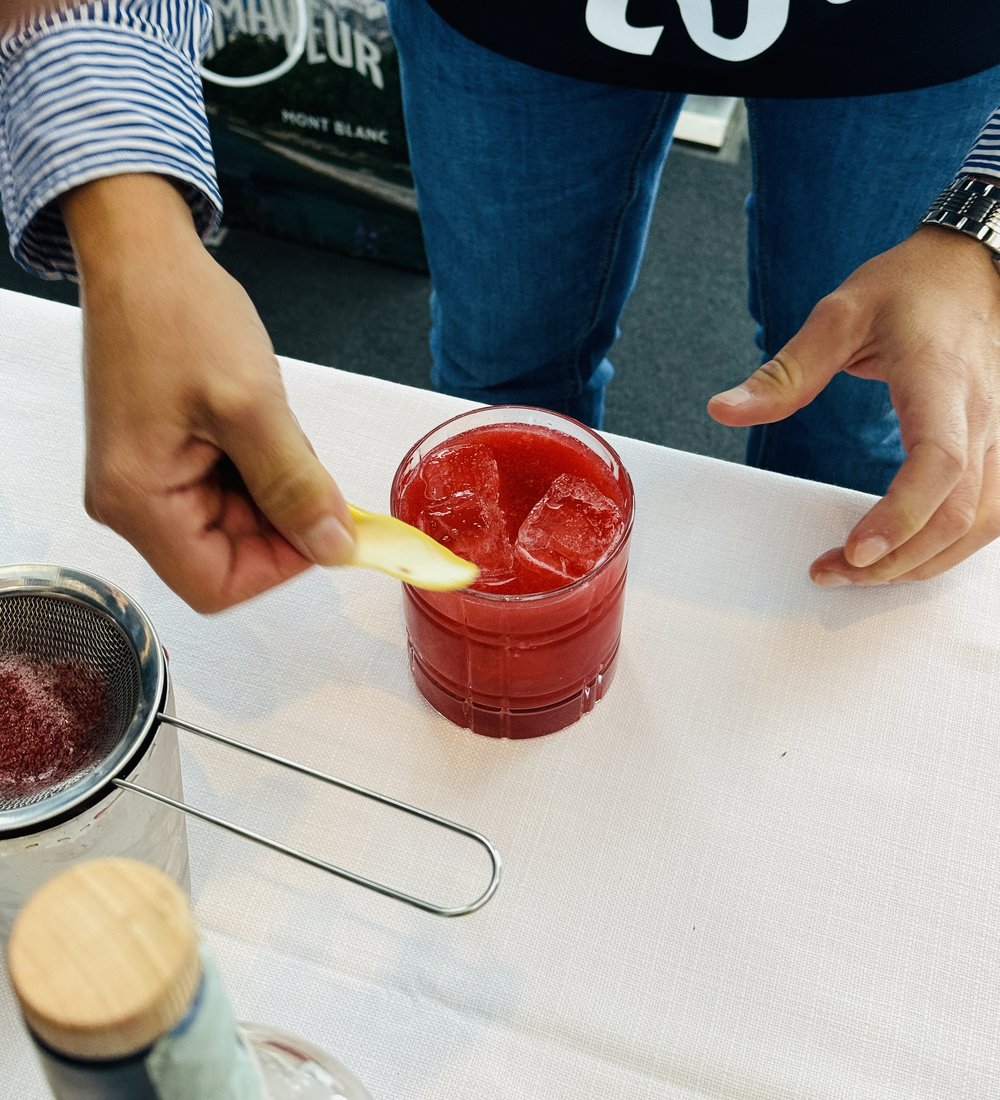Génépy, the alpine spirit finding its place in mixology

Génépy, a traditional Alpine liqueur, embodies the essence of the high-altitude regions of the Alps, with strong cultural ties to areas like the Aosta Valley, Piedmont, and Savoy. Its main ingredient, Artemisia mutellina (also known as Artemisia umbelliformis), is an alpine herb that grows in the rugged, high-altitude regions of the Alps. For centuries, it has been prized for its aromatic and medicinal properties, often used in remedies to aid digestion, alleviate respiratory ailments, and promote general well-being. Classified as a protected plant in 1928 due to overharvesting and its delicate habitat, local farmers turned to cultivating Artemisia mutellina, the most adaptable species for sustainable farming.
The consumption of Génépy has a long and storied history. Originally used by mountain dwellers, who would infuse dried Artemisia herbs in alcohol to create a warming and invigorating beverage, perfect for braving the harsh Alpine winters, Génépy was also regarded as a health tonic. It was consumed after meals to aid digestion or offered as a remedy for colds and fatigue.
By the 19th century, the production of Génépy had expanded beyond households to small-scale commercial distilleries, which began refining the methods to balance its bitterness with subtle sweetness. Its reputation spread among travelers and climbers who visited the Alps, cementing its status as a regional specialty. Over time, Génépy came to symbolize Alpine culture, representing the connection between the people and their mountainous environment.
In 2015, Génépy earned the Indicazione Geografica Protetta (IGP) designation, requiring all aspects of its production—from cultivation to bottling—to take place in the Aosta Valley. Today, producers adhere to strict guidelines to preserve its authenticity: the liqueur must include at least 4 grams of dried Artemisia per liter, meet specific sugar and alcohol content requirements, and avoid artificial additives or flavors.
While Génépy has long been consumed as a digestif, it is increasingly finding a place in modern cocktail culture and international markets. It is typically enjoyed neat or on ice, although bartenders are also incorporating it into cocktails that highlight its herbal characteristics. Its continued relevance today demonstrates how the Aosta Valley’s tradition can adapt to contemporary preferences.
The SkyWay Cocktail Competition, held annually at the Skyway Monte Bianco, underscores the growing interest in integrating traditional spirits like Génépy into contemporary cocktail culture while paying homage to the Aosta Valley’s traditions.
Each year, nearly 50 participants compete at altitudes ranging from 2,173 meters at Pavillon du Mont Fréty to 3,462 meters at Punta Helbronner. The competition is judged in two distinct phases, taking into account the altered sensory experience at such heights. A key requirement for contestants is the use of Génépy, showcasing its versatility and its importance as a symbol of the region's culture.
This year, in the 9th edition of the competition, organized by the ABI Professional Valle d'Aosta Section in collaboration with the Courmayeur Service Center (CSC), Domenico Costa was crowned the winner with his cocktail “Geneberryp,” composed of 30 ml Irish Whiskey, 30 ml Génépy, 30 ml fresh lemon juice, 25 ml agave syrup, and 25 ml blended blackberries.
We spoke with Bernardo Ferro, the president of A.B.I. Professional (Italian Bartenders Association) and a passionate advocate for the traditions of the Aosta Valley, who was also the official host of the competition. He shared his insights on the present and future of Génépy, highlighting its transformation from a classic après-ski digestif to a key ingredient in contemporary mixology. He also emphasized the importance of preserving Génépy’s artisanal roots while showcasing its potential in modern cocktail culture.


Domenico Costa

Bernardo Ferro

How do you view the evolution of Génépy?
The evolution of Génépy is a fascinating example of how alpine traditions can adapt to contemporary trends. Historically appreciated as a symbol of après-ski, associated with comfort and mountain conviviality, Génépy has found new life in the world of mixology.
Its herbal delicacy, balanced and less intense than Chartreuse (which, as a reminder, contains 130 different herbs), makes it a versatile ingredient for cocktails that aim for a sophisticated yet accessible aromatic profile. With the growing interest in artisanal spirits and the authentic stories behind them, Génépy has the potential to emerge as a key player in sustainable mixology rooted in the territory. It serves as a bridge between the past and the future, appealing to both aficionados of alpine traditions and bartenders seeking fresh, original inspiration.
How would you assess this year's edition of the Skyway Cocktail Competition?
We’ve reached the 9th edition, and I must say that the level of professionals grows higher every year. The recipes are incredibly interesting, and the pairings are outstanding, making this year's edition wonderful as well. I would also like to highlight the fact that the Barladies of ABI Professional are also involved in charity work. They prepare a drink that is offered to customers, who make a donation. The total proceeds are donated to the IEO (European Institute of Oncology) in Milan.
What do you think Génépy adds to cocktails as an ingredient? What are your favorite combinations that include Génépy?
Génépy, a liquor typical of the Alps made from alpine herbs such as artemisia, adds a unique aromatic profile to cocktails, herbal and slightly bitter, with floral and balsamic notes. Its complexity makes it a versatile ingredient, able to enrich classic cocktails or inspire new ones with a mountain touch and sophistication. I enjoy pairing it (in cold cocktails) with apple juice, a red fruit syrup, and Metodo Classico sparkling wine. One great result was creating a sparkling cocktail with clear apple juice, saffron syrup, and a local sparkling wine—truly a blast! In the warm version, I like making an "Alpine Toddy" with Génépy, honey, spices, and a slice of lemon—a real remedy for cold evenings in the Aosta Valley.
How is Génépy positioning itself compared to other iconic Italian liqueurs?
Génépy is gradually positioning itself in the market as a distinctive liquor that represents the alpine tradition, thanks to the efforts of the Aosta Valley producers, who focus on quality and authenticity. Compared to other iconic Italian liqueurs, such as Limoncello, Amaro, or Fernet, Génépy stands out for its herbal flavor profile and strong connection to the mountainous region.
However, its recognition remains largely local, and in order to rank among the most well-known and consumed liqueurs, additional efforts are needed. This includes:
- Expanding distribution beyond regional and national borders.
- Targeted promotion, presenting it not only as a traditional digestif but also as a versatile ingredient for modern cocktails.
- Educating the public on its uses and unique characteristics, perhaps connecting it to tourism and cultural experiences linked to the Aosta Valley.
With a well-articulated strategic plan, Génépy has all the potential to become a symbol not only of the Alps but also of Italian craftsmanship in general.
Is Génépy developing a stronger identity in the international market?
The Génépy from the Aosta Valley is gaining international visibility, but it will still take time to be fully recognized. However, its unique characteristics and the growing interest in artisanal and regional products provide opportunities to expand beyond local borders. With promotional initiatives and strong emphasis on tradition, Génépy has the potential to become a distinctive product globally. We are on the right path, but growth still requires time.
Which Génépy producers do you consider the most interesting and deserving of wider recognition?
Certainly, the companies that have supported our competition for years. I consider them the most important, not only because they are our partners but also because, together, they account for over 90% of the production in the Aosta Valley. They are:
- Distillerie Alpe
- Distillerie Cortese
- Distillerie Saint Roch
- Distillerie Savio
- Vertosan
- Distillerie La Valdotaine
What is your opinion on the current perception of Génépy in Italy and abroad? Do you notice a growing interest in herbal liqueurs?
Génépy is becoming more widely recognized, especially in Italy, where it is appreciated as a symbol of the Aosta Valley. However, outside the region, its fame remains limited. Internationally, Génépy is less known, but it certainly has growth potential, especially among aficionados of artisanal and high-quality liqueurs.
As for the interest in herbal liqueurs, yes, there is a noticeable trend, with increasing attention on natural products tied to tradition. Consumers are more and more attracted to liqueurs that tell a story and have distinct characteristics.
How would you evaluate the possibilities of obtaining DOP certification for Génépy liqueur?
Obtaining DOP certification for Génépy liqueur would be a significant step, but the Aosta Valley producers have already made an important move with the identification of "Génépy Valle d'Aosta" as an IGP (Geographical Indication). This recognition already gives the product an official connection to the territory and protects its origin, although DOP would take it to a higher level, with stricter requirements regarding production and quality.
- Tradition and territorial connection: Génépy has a strong link to the Aosta Valley, and the IGP recognition has already shown that there is a close connection between the product and the territory, which is a key requirement for DOP.
- Regulations and requirements: DOP certification requires more regulation than IGP, with precise rules regarding production methods, raw materials, and the production area.
- Support from local producers: The IGP recognition has already involved Aosta Valley producers in a process of unification and standardization, which further facilitates the path toward potential DOP certification.
In summary, while Génépy already has an important recognition as IGP, DOP certification could be a further step to consolidate its position as an exceptional product. The path is already laid out, but the process requires continued commitment from all local producers.
